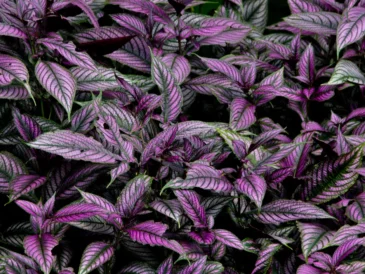If you garden long enough, you’ll eventually experience the joy of waging war against a plant you just had to have, only to find out later that it was bent on total world domination.
Who knows, maybe you’re still trying to eradicate it from your garden to this day.
In an effort to help others avoid this fate, I’ve collected a few of the most common plants that folks end up regretting. Hopefully, this list will help you avoid a serious case of gardener’s remorse in the future.
And should you find a plant on this list that you absolutely must grow, I’ll even give you a few tips on how to keep them contained.
1. Mint (and all its varieties)

Ask anyone who has planted mint in their garden about their experience, and you’ll likely be met with a grimace of pain.
Mint is notorious for spreading like wildfire once established. That’s because it spreads through rhizomes that grow under the soil, as well as runners that spread above ground. These rope-like extensions can be tough to pull up, and if you don’t get all of it, then the plant will pop back up again.

I made the mistake of planting mint in my herb garden because I like the occasional mint julep or a mojito in the summer. I’ll tell you what. If I used all of the mint that’s growing in my garden right now for cocktails, I’d be dead from liver failure by the end of the day.
But don’t let that stop you from planting mint.
It’s a wonderful herb to have on hand, both fresh and dried. However, the wise gardener will plant it in a pot.
If you want the look of mint growing in your garden, you can even bury the pot in the ground. However, you should leave about half of the pot above ground, and you’ll need to be diligent about snipping off any runners that decide to jump over the edge in a bid for freedom and open soil.

2. Morning Glory

With beautiful heart-shaped leaves and vibrant trumpet flowers, it’s hard not to love morning glories. They’re charming and cheerful. Of course you would want to plant them in your garden.
However, once you do, you’ll likely be battling masses of dense foliage that will creep and cover anything in its path. Morning Glory will root anywhere there is a node along the stem and send more runners into the ground.
Eradicating morning glory once it gets ahold takes considerable energy and time, sometimes spanning years.
The seeds can lie dormant in the ground for decades! Just ask anyone dealing with its not-so-distant cousin, bindweed.

An easy way to head this nightmare off at the pass is to plant it in window boxes or pots and keep it contained to your patio or balcony. Deadhead spent blooms to prevent the seeds from spreading.
3. Sunchokes or Jerusalem Artichokes

Sunchokes or Jerusalem artichokes are a tough one. Yes, they can spread and grow out of control. In fact, the only reason they aren’t considered invasive is because they’re native to North America.
However, this delicious and nutrient-packed plant deserves a spot in your garden.

If you want to tame sunchokes, then grow them in their own dedicated raised bed and cut the flowers before they have a chance to go to seed.
4. Chinese Wisteria
Apparently, we have this penchant for bringing plants from Asia to the Americas for our gardens. Then we’re suddenly surprised to find that they take over because of a lack of natural competitors when they escape from our backyards.

A classic case is the beautiful Chinese wisteria, with its long grape-like flower clusters.
CONTINUE READING IN PAGE 2




